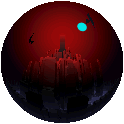|
|
|



Deer
were always considered magical creatures. The extrusion of horn from their heads
was a symbol of powerful life force. Horned deer were the animal prototypes of
the Horned God. Medieval wizards expressly preferred parchment made of deer skin
for the writing of their letter amulets. Durham cathedral was founded on the
site of an ancient deer shrine. Its name was originally Duirholm, the Meadow of
the Deer. It was a pagan pilgrimage center for at least four centuries. - # 161:
In Celtic tradition deer are frequently the means of taking souls to the
otherworld. There are Celtic, Irish and Gaelic goddesses associated with them,
such as Flidass, Goddess of Venery, who has a chariot drawn by deer. They are
supernatural animals of the fairy world and are fairy cattle and messengers.
Stag hunts often end in some supernatural situation. Deer skin and antlers were
used as ritual ornaments and vestments.
The Deer is one of the foremost transformatory beasts in British mythology, especially in its form of the White Doe or White Stag, which is frequently an otherworldly messenger which hunters encounter, leading them ever deeper into the forest to unknown wonders. From the WhiteStag encountered by Pwyll to the White Hart which Galahad sees, betokening Christ, pagan and folklore traditions have asserted the beauty and mystical grace of this creature. Sadbh was enchanted into the form of a doe. Gilfaethwy, while Gwydion was changed into a stag. The human antlered figure has been a potent image from primeval times onwards, from the shaman-hunter and the Wild Huntsman in his form of Cernunnos, to the Abbots Bromley Horn Dance which is still danced every September - the time when the deer are in rut.

![]()